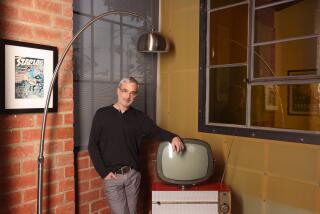The Scam in the Sky : TELLERâS WAR: The Top-Secret Story Behind the Star Wars Deception <i> By William J. Broad</i> , <i> (Simon & Schuster: $25; 350 pp., illustrated) </i>
Democracy is based on the idea that the people rule and that the best decisions are made in public view. The nuclear age, however, has demanded and fostered a pervasive secrecy, at least about weapons and strategies. Great national laboratories and think tanks have spent many billions of dollars designing and perfecting the nuclear arsenal, all protected by strict classification rules and hidden from public oversight.
The need for a split-second response to a nuclear attack has of course made it necessary to shift the war-making power to the President and to eviscerate Congressâ constitutional authority and responsibility to declare war. But the secrecy that engulfs nuclear decision-making can also lead to less-than-optimal decisions.
A case in point are the dangers chillingly and meticulously described in William J. Broadâs âTellerâs War,â the story of the Star Wars scam and the deceptions that were at the heart of it. As Broad accurately and persuasively lays out, some of the nationâs leading nuclear scientists--led by Edward Teller--actively misrepresented the success of research on X-ray lasers and the prospects for developing weapons in space that could shoot down enemy missiles at the speed of light.
Teller is an extraordinarily interesting and brilliant figure: the father of the H-bomb, destroyer of Robert Oppenheimerâs career, rabid and uncompromising anti-communist, a pariah to many and hero to some, a powerhouse of ideas, only a few of which turned out to be right but all of which he has pursued with equal enthusiasm.
Most important, at least for this story, is that Teller had caught the attention of Ronald Reagan when he was governor of California and then captured his ear when he became President. Tellerâs stories of the wonders and potential of X-ray lasers--unsupported by fact--wowed the President, whose understanding of technical matters was, shall we say, limited. They convinced Reagan that deterrence--Mutual Assured Destruction--could be replaced by assured survival, and he launched the Star Wars program in March, 1983.
But there were some scientists who knew the truth about X-ray lasers and Tellerâs fantasies. Chief among them was Roy Woodruff, a senior researcher and executive at the Lawrence Livermore Laboratory, the weapons lab near San Francisco that Teller had created and that was developing the laser.
Throughout the mid-1980s, as Star Wars research boomed, Woodruff tried to counter Tellerâs misrepresentations and bring the facts about X-ray lasers to senior policy-makers. He was repeatedly thwarted by the labâs director, then fell from favor, was banished to a remote corner of the lab and ultimately was forced to leave.
This debate, which was at the heart of the Star Wars program and its expenditure of much wealth and brainpower, took place in complete secrecy, shrouded from public view.
Broad, a science reporter at the New York Times, has done a remarkable job in piecing together the story of what happened and how ideology overwhelmed the truths of physics. His story moves quickly and deftly, and he provides enough technical detail to allow readers to understand what was going on, but not so much to stop the narrative cold.
Teller convinced Reagan that X-ray lasers could become antimissile weapons orbiting in space that would convert the energy from nuclear explosions into staggeringly powerful beams capable of destroying enemy missiles on launch. From the beginning, it was not clear whether such devices were feasible or whether enough energy could be produced and focused to accomplish the task.
Nonetheless, Broad recounts how Teller repeatedly made grandiose claims to Reagan and others, reporting experimental successes well beyond what was actually achieved, and promising future results that were unattainable.
But only a few highly placed scientists knew about this work and about Tellerâs fantasies, and all of them were part of the same nuclear-weapons fraternity. Had more scientists been able to look at the experimental results and comment on them, Tellerâs deceptions would have been exposed much earlier.
âThe main question this book has tried to address is how Edward Teller, a man so gifted scientifically, could repeatedly mislead the White House on critical issues of national security,â Broad writes near the end of the book. A few pages later he suggests, almost in passing, âSecrecy must be eliminated wherever possible in order to derail the kind of false momentum that allowed the X-ray laser to get so far with so little. Openness is the only sure antidote to the abuse of power.â
The book works on many levels. It is a personal story: Woodruff versus Teller. It is a story about the sociology of the shadowy nuclear-weapons world and how it interacts with government. And it is the story of how the processes of government badly misfired.
But the book is no polemic, and that is among its many strengths. Broad writes in measured tones, and despite the fact that Teller refused to talk to him, he strives to be fair.
By now, the limitations of the X-ray laser have been conceded by everyone--including Teller--but the Star Wars program continues on. Now, instead of a nuclear antimissile system, the plan is to build a network of âbrilliant pebblesâ in space, small, cheap interceptors that would destroy enemy missiles by colliding with them. Teller, originally skeptical of this relatively low-tech plan, is now one of its most ardent boosters.
Still, the work is largely hidden from public oversight. We must simply accept the weapons designersâ word for the wisdom of their endeavors. But based on the history of the X-ray laser, the public should be very skeptical of what the weapons people say.


